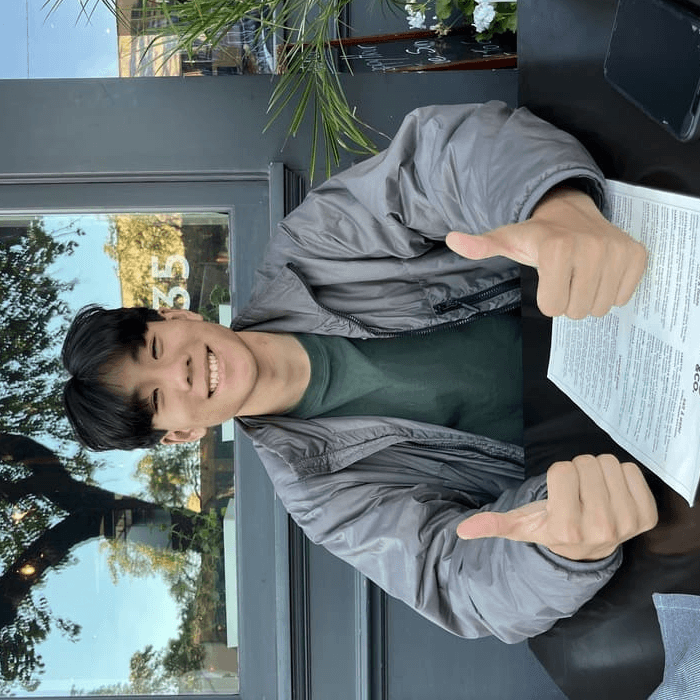< Back
How to Cite a Book in the APA Format With Tips and Examples
Declan Gessel
Oct 7, 2024
Do you need help with citations? You're not alone. Whether you're just starting or you've been at it for a while, citing sources can feel like a never-ending headache. But getting it right is crucial, not just for your grades but for your integrity as a writer. In this guide, we'll break down the process of citing a book in APA style so you can focus on crafting a fantastic essay.
But don't worry; we won't just throw a citation guide at you and leave you to figure it out. We'll introduce you to a tool that can help you find sources for your essay quickly and easily. It's called Jotbot's source finder, like a personal research assistant. Just tell it you are looking to find sources for essay AI, and it will do the hard work for you.
Table Of Contents
What Is The APA Format?

The APA (American Psychological Association) format is a structured citation style mainly used in social sciences and education. It helps document sources in research papers, theses, articles, and reports, ensuring consistency and professionalism.
Key Components of APA Format
In-Text Citations
In-text citations in APA format guide readers to the corresponding source in the reference list by including the author's last name and the year of publication. They are placed right after the sentence with the referenced information or within it. For example, you might see (Jones, 2023) or “According to Jones (2023)...”
Reference List
At the end of an APA-formatted paper, a detailed reference list includes every cited source. Each entry should follow a specific structure:
Author(s). (Year of Publication). Title of the work. Source/Publisher.
Example:
Smith, J. (2023). The Art of Behavioral Psychology. Academic Press.
Why Use APA Format?
Establishes Credibility
APA format adds professionalism by ensuring proper credit for all external ideas and data. This signals readers and reviewers that your research is based on verifiable data, making it more authoritative.
Prevents Plagiarism
Proper citation safeguards you against unintentional plagiarism, which happens when someone else’s work is presented without acknowledgment. This is a serious academic offense. APA format helps clearly distinguish your ideas from borrowed ones.
Standardization Across Disciplines
APA's uniform structure aids readers in locating and understanding cited sources. This common structure makes academic papers more straightforward to read, review, and critique.
Maintains Clarity
Following APA’s rules on format and style (including headings, spacing, and font) makes papers more organized and readable, helping convey complex ideas clearly without distracting formatting issues.
Use Cases for APA Format
Academic Writing
The APA format is the primary style for theses, research papers, dissertations, and journal articles in psychology, sociology, and education.
Professional Reports
APA is also used for writing case studies, clinical reports, and technical documents, especially when citing multiple sources, which is necessary to build on existing knowledge.
Grant Proposals
Researchers often need to cite foundational studies or statistics when applying for grants, making APA a crucial tool for grant writing and proposals.
Structure of an APA-Formatted Paper
APA format dictates the entire layout of a paper, from title pages to body text. Common structural elements include:
Title Page
Includes the title of the paper, the author’s name, institutional affiliation, and sometimes a running head and page number.
Abstract
A summary of the critical points of your paper, typically between 150-250 words.
Headings and Subheadings
APA uses a structured hierarchy of headings to organize content, ensuring clarity.
In-Text Citations
Cites sources directly within the body of the text.
Reference List
Contains detailed information on all cited works.
Related Reading
• How To Find Good Sources
• Using AI For Research
• Citing ChatGPT
• How To Find Academic Sources
• How To Cite AI In MLA
• AI For Research Paper Writing
• Essay Sources
• AI In Academic Writing
• Most Reliable Sources For Research
• How To Get ChatGPT To Cite Sources
How to Cite a Book in APA Format

Mastering APA Book Citations
Citing a book in APA format can feel like a puzzle at first. You need to ensure you capture the right details in the correct order. Start with the author’s last name, followed by their initials. For books with multiple authors, list all up to 20, using an ampersand before the last one. Next, include the year of publication in parentheses. The book's title comes after, in italics, with only the first word and any proper nouns capitalized.
Finally, add the publisher’s name without extra words like "Publisher" or "Inc." It all comes together like this: Johnson, T. R., & Lee, S. P. (2021). Understanding social dynamics. Academic Publishing.
The Edited Book Exception
Edited volumes require a twist on the usual format. Here, the editor’s name replaces the author’s, followed by “Ed.” or “Eds.” in parentheses. This shows who compiled the work rather than who wrote it. For instance: Martin, J. (Ed.). (2020). Innovative approaches in education. Scholarly Press.
Citing a Chapter in an Edited Book
You need more detail when citing a specific chapter from a book. Start with the chapter author’s name and the chapter title. Then, in parentheses, write out “In” followed by the editor’s name, the book title in italics, the page range of the chapter, and the publisher. Like this: Chen, L. (2020). Techniques in data analysis. In J. Martin (Ed.), Innovative approaches in education (pp. 45-67). Scholarly Press.
Extra Tips for APA Book Citations
APA format has its quirks, and paying attention to them can make your citations flawless. Include an e-book with a DOI at the end of your citation. Also, keep an eye on spacing, indentation, and italics, as these elements need to be just so. If you’re referencing a source mentioned in another source, use “as cited in” to guide your reader. All these factors contribute to transparent and consistent citations.
Meet Jotbot: Your Document Assistant
Get help with citations and much more using Jotbot, your AI writing assistant. From taking notes to summarizing videos, Jotbot has you covered. Write more competent, not harder, with Jotbot's AI writing assistant. Start finding sources for free with Jotbot's source finder today. Sign in with Google and get started in seconds.
Related Reading
• Best AI Tool For Research
• Reference Finder
• Best AI For Research
• How to Cite AI
• AI For Literature Review
• Websites Like Google Scholar
• AI That Cites Sources
• Best Academic Search Engines
• Academic Research Software
• How To Use Chat GPT For Research
• Best Research Tools For Students
Common Mistakes When Citing a Book in APA Format

Mixing Up Author Formatting? Keep It Clean
Getting the author’s name wrong is more common than you’d think. In APA, it’s all about the last name followed by initials, and if there’s more than one author, use an ampersand before the last one. Keep it simple: Johnson, T. R., & Lee, S. P. This clarifies your citation needs.
Skipping the Year? A Timely Reminder
Don’t forget the publication year. It tells readers how fresh the information is. Place it right after the author’s name in parentheses. Like this: Johnson, T. R. (2021). Understanding social dynamics. Without it, your citation loses context.
Title Trouble? Keep It Stylish
Book titles in APA are italicized but don’t capitalize every word. Just the first word of the title and subtitle, plus any proper nouns. So, it’s “Understanding social dynamics: A comprehensive guide,” not “Understanding Social Dynamics: A Comprehensive Guide.” This keeps things consistent.
Publisher Details: Keep It Simple
When listing the publisher, less is more. Drop unnecessary bits like “Inc.” or “Co.” Your citation will look cleaner, not Academic Publishing, Inc. This way, readers know exactly where to look.
Missing DOIs? Connect the Dots
If there’s a DOI, use it. It’s your direct link to the digital source. Add it at the end of your citation. This makes it easy for others to find exactly what you’re citing.
Citing Chapters? Give Credit Where It’s Due
Refrain from mentioning the editor when citing a chapter from an edited book. Include the chapter author, too. Use this format: Chen, L. (2020). Techniques in data analysis. In J. Martin (Ed.), Innovative approaches in education (pp. 45-67). Scholarly Press. This reflects both contributions accurately.
Tips for Citing a Book in APA Format

Mastering the Basics of APA Book Citations
To cite a book in APA format, start with the essentials: Author(s), Last Name, and Initial(s). (Year of Publication). Title of the book: Subtitle if applicable. Publisher. For example, Smith, J. A. (2020). The dynamics of leadership: Insights and practices. Leadership Press. This straightforward structure ensures you include all necessary elements without any hassle.
Handling Multiple Authors Like a Pro
When dealing with multiple authors, list each one’s last name followed by their initials up to 20 authors. For more than 20, list the first 19, add an ellipsis, and then list the final author. Example: Johnson, T. R., Smith, L. A., & Brown, K. P. (2021). The journey of innovation. Tech Publishers. Keep the order and format precise to avoid errors.
Capitalization and Italics: Getting it Right
In APA, italicize the entire book title and capitalize only the first word of the title and subtitle, plus any proper nouns. For example, Understanding social dynamics: A comprehensive guide to relationships. Don’t capitalize every word—stick to the rules to meet APA standards.
DOI and Online Access: Essential Additions
If the book has a DOI or is available online, include this info at the end of the citation. It’s a helpful way for readers to access the book quickly. Even for print versions, include a DOI if available. Brown, K. P. (2019). Advanced marketing strategies. Marketing Press.
Naming the Publisher Correctly
Include the publisher’s name in your citation unless the publisher is the author (joint in self-publishing). In those cases, omit the publisher’s name to avoid redundancy—for example, Smith, J. A. (2020). Effective communication strategies.
Finalizing Your Citations: The Last Step
Before submitting your work, double-check your citations for any formatting issues or missing details. According to APA guidelines, ensure punctuation, author order, and title italics are correct.
Meet Jotbot: Your Document Assistant
Jotbot is your personal document assistant and source finder. Jotbot does AI note-taking, AI video summarizing, AI citation/source finder, writes AI outlines for essays, and even writes entire essays with Jotbot’s AI essay writer. Join 500,000+ writers, students, teams, and researchers worldwide to write more, write better, and write faster with Jotbot's AI writing assistant. Write more competently, not harder, with Jotbot's AI writing assistant. Start finding sources for free with Jotbot's source finder today. Sign in with Google and get started in seconds.
What About A Book With Multiple Editions?
Mastering APA Book Citations: Multiple Editions Edition
The edition number is your best friend when dealing with a book with multiple editions. It goes right after the title in parentheses. This is crucial because different editions can have updated content, especially when dealing with textbooks or academic research material. So, use that year if you cite the third edition of a sociology textbook published in 2018. Here's how it looks:
Smith, A. B. (2016). Introduction to Sociology (3rd ed.). Social Science Publishers.
Navigating Special Editions: Revised, Updated, and More
Not all editions are created equal. Some are labeled "Revised" or "Updated," which can significantly differ from the first or other editions. So, be clear about what you're citing:
Doe, J. (2020). Introduction to Data Science (Rev. ed.). Tech Press.
Older textbooks often undergo frequent updates with new research and findings. Including the edition tells your readers that the book has the latest information.
Keeping Publisher Information Accurate
The publisher might stay the same even if a book is in a new edition. But it’s worth double-checking to ensure your citation is spot on. This adds credibility to your work, especially in fields where information evolves rapidly.
Citing E-Books: The Digital Twist
Regarding e-books, you must include the author, publication year, title, and source (URL or DOI). The format is similar to print books, but the publisher is optional if you have a DOI or URL:
Brown, M. L. (2021). The psychology of learning (2nd ed.). https://doi.org/10.xxxxxxx
Handling E-Books from Databases
Many academic e-books are accessed through databases like ProQuest or EBSCOhost. You don’t need to mention the database name, just the DOI or a permanent URL:
Smith, J. (2019). Understanding Sociology. ProQuest Ebook Central. https://doi.org/10.xxxxxxx
E-Books Without a DOI
If your e-book doesn’t have a DOI and was found online, use the URL where it can be accessed, as long as it’s publicly available:
Johnson, A. (2020). The future of AI. https://www.website.com/ebook
Specific Formats: Kindle, PDF, and More
Sometimes, the format of an e-book is relevant (like Kindle or PDF). It’s a good idea to include this, though it’s not always required:
Doe, J. (2017). AI in education [Kindle version]. Amazon. https://amazon.com
Citing e-books accurately ensures readers can access the material you used in your research. When you use DOIs, your e-book is easily trackable, and readers can rely on consistent information.
Write Smarter With Jotbot's Source Finder — Start Writing for Free Today
Jotbot is your go-to tool for making writing tasks easier and faster. It’s like having a personal assistant for your documents. With Jotbot, you can take AI notes and video summaries, find citation sources, and even write complete essays. Over 500,000 writers, students, and researchers use Jotbot to improve their writing. Want to write better and faster? Sign in with Google and start using Jotbot’s source finder for free.
Related Reading
• Elicit AI
• Scholarcy AI
• Scisummary
• AI Research Tools
• Sourcely
• Consensus AI Tool
• Mendeley Alternatives
• Cite This For Me Alternative
• Scholarly Sources Examples
• Academic Sources Examples
• How to Find Scholarly Sources
• List of Scholarly Sources
• Examples of Peer Reviewed Sources
• How to Cite an Article
• How to Cite
• How to Cite a PDF
• How to Cite Multiple Authors MLA
•How to Cite a Website in Text
• How to Cite a Lecture
• How to Cite ChatGPT
Write more, better, faster.
Your personal AI document assistant












